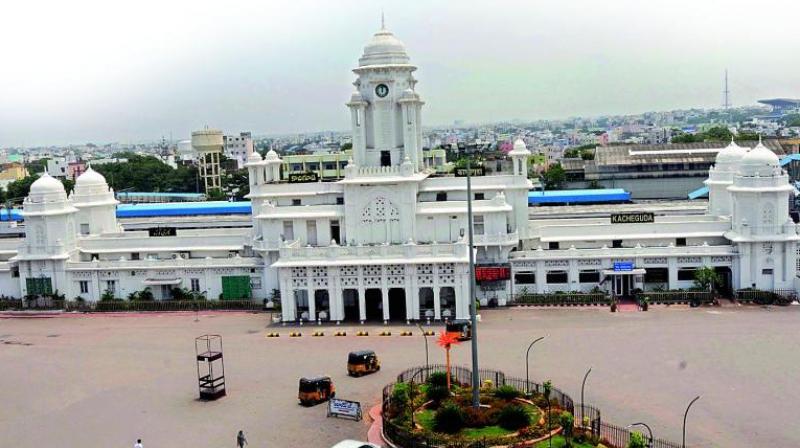Railways marks 171 years of service in India

Hyderabad: On April 16, 1853, India inaugurated its first passenger train service, marking the beginning of the country's enduring railway legacy. Over the course of 171 years, the Indian Railways has evolved into the preeminent mode of transportation in the country. It facilitates the commute of 1.8 crore passengers.
One of the largest rail networks in the world, Indian Railways connects 7,000 railway stations. It operates 16,000 trains criss-crossing the country’s length and breadth through its 1.35 lakh kilometre of rail track. The Indian Railways is the largest employer with a workforce of 14 lakh people.
Hyderabad, which is part of the South Central Railway, has a unique history. In 1855, the Nizam government invested £500,000 to establish the Nizam State Railways, with the inaugural line connecting Nizam State’s capital Hyderabad to Wadi in 1874 — 19 years after India’s first railway line was operationalised.
Kacheguda was the headquarters of the Nizam State Railways. The construction of the Kacheguda railway station in 1916 further solidified its importance within the railway infrastructure. In 1930, Nizam State Railways became the "His Highness the Nizam Guaranteed State Railways."
In an interview with Deccan Chronicle, K. Balaji, the Station Director of Kacheguda railway station, elaborated on its historical prominence of the railway station, whose iconic building is always mistaken as a palace by non-locals.
The Indian Railways had set up a rail museum on the precincts of the Kacheguda railway station. Balaji said the museum preserves and showcases the rich heritage of the region's railways, featuring vintage photographs, prototypes, and signalling equipment dating back to the Nizam era.
“Visitors can experience the nostalgia of yesteryears through working models, historic tickets, and archival photographs, offering a vivid portrayal of the railway's evolution,” he said.
Among the museum's prized exhibits are prototypes such as the B777, one of the initial 4B class steam locomotives utilised in the Darjeeling-Himalayan Railways since 1881, manufactured by Sharp Stewart & Co., Glasgow, England.
Another important display at the museum includes the XGM 911, a 161-ton locomotive manufactured by Beer Peacock & Co., imported by the NW Railway for shunting purposes. The museum further boasts an array of rolling stock prototypes and rescue devices utilised by the Indian Railways, offering visitors a comprehensive journey through the annals of railway history.

